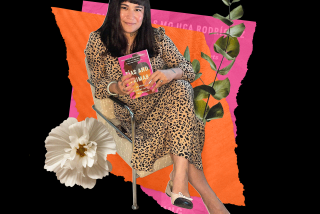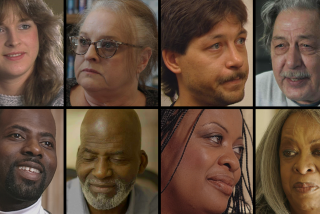Race-based schism splits feminism’s path
- Share via
In her article on women’s battle to integrate the worlds of work, home and family, Mimi Avins unfortunately trots out the same tired cliches and assumptions that have hamstrung mainstream feminism since its inception (“Mystique of the Feminine Veils a Difficult Choice,” Dec. 22).
When I saw the ads and media hype for both “Mona Lisa Smile” and “Something’s Gotta Give,” I cringed: Here we go again, I thought, more poignant tales about the trials and tribulations of upper middle class white women negotiating the work/family divide. More tales that are utterly divorced from the lives of the vast majority of women who have neither the race nor class privilege to “choose” whether they will work or have a family.
During the so-called Ozzie and Harriet era of the 1950s, black women like my grandmother were making subsistence wages cleaning the homes of women similar to “Mona Lisa Smile’s” well-heeled protagonists. Her day did indeed consist of “baking a good cake and mopping the floor till it shined” (to quote Kate White from Cosmopolitan), but for the benefit of a white housewife, not for her own family. Traditional wage disparities between black men and white men did not allow black working and middle-class women to bask in the trappings of the “feminine mystique.”
Contrary to the halcyon images of the Hollywood nostalgia machine, the ‘50s, with its taint of McCarthyite witch hunts, Jim Crow racial terrorism and postwar displacement of scores of workers of color who depended on industry for their families’ livelihood, was no Eden of white picket fence social stability.
Thus the lives of “Mona Lisa’s” Wellesley students don’t qualify as a window into the dilemmas of working class women (white or of color) in that era.
The article’s suggestion that these films credibly depict the “choices” that all women grapple with underscores the cultural and racial biases that have bedeviled the mainstream women’s movement. Although African American social activists and intellectuals of the 19th and 20th centuries played key roles in shaping notions about the intersection of employment, child care and housework, the dominant culture has always portrayed feminism as a white concern. The legacy of this schism in feminist discourse can be seen in the elitist debate over whether women should embrace the world of work or family. According to the Department of Health and Human Services, African American women have the highest percentage of workforce representation compared to women of other ethnicities. Further, black and Latino women still continue to make less than white women in nonunionized jobs that give them little financial or emotional relief from the added burden of child care.
Though white women of the “Mona Lisa Smile” / “Something’s Gotta Give” continuum have been some of the biggest beneficiaries of affirmative action, there is little political recognition of the immense debt upwardly mobile white women owe to the institutionalization of civil rights public policy.
Flipping through the pages of Calendar, I rarely, if ever, see cinematic images or stories of creative, complex women of color that could inspire the brilliant young women that I work with in South Los Angeles. As astute social critics, my students are well aware of the low expectations of a culture that views them as “sassy,” rump-shaking video “hos” or single mothers with five kids on public assistance. Faced with diminishing college prep opportunities and the “Wal-mart-ization” of low-wage, nonunionized employment in South L.A., my students would perhaps laugh bitterly at the suggestion that women are faced with a dizzying array of life options. In a culture that marginalizes the lives of working black and Latino women at every step, the so-called “backlash against [women] having it all” is the luxury of historical amnesiacs.
More to Read
Only good movies
Get the Indie Focus newsletter, Mark Olsen's weekly guide to the world of cinema.
You may occasionally receive promotional content from the Los Angeles Times.







